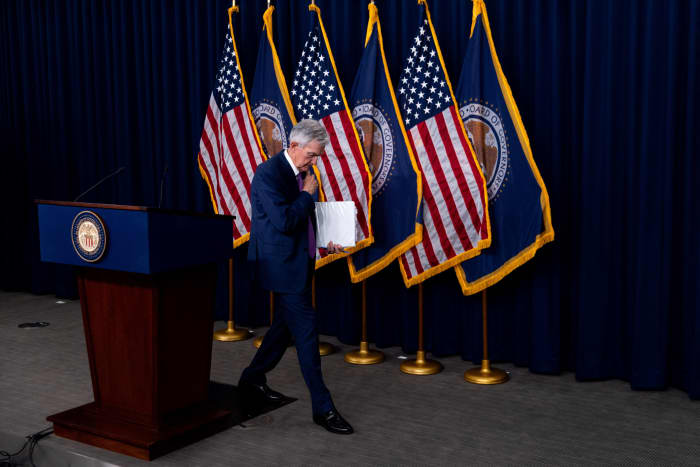Federal Reserve Chair Jerome Powell used his press conference Wednesday to throw cold water on market expectations that the Fed would begin to cut interest rates in March.
“Based on the meeting today, I would tell you that I don’t think it is likely that the committee will reach a level of confidence by the time of the March meeting to identify March as the time to do that, but that is to be seen,” Powell said.
“So, I wouldn’t call it … the most likely case, or what we would call the base case,” he added.
“A March cut? Fuhggeddaboutdit!” wrote Derek Holt, head of capital markets economics at Scotiabank, in a note to clients.
Stocks SPX DJIA closed lower and the 10-year Treasury note yield BX:TMUBMUSD10Y fell below 4% after Powell’s press conference.
Here are some key takeaways from the Fed chair’s press conference.
The Fed wants to see ‘the whites of 2% inflation’s eyes’
Bill Adams, chief economist for Comerica Bank, said Fed officials were badly burned in late 2021 and 2022 when they thought high inflation would be transitory. They want to avoid making the same mistake now, he said.
“The Fed will wait to pull the trigger on rate cuts until they see the whites of 2% inflation’s eyes,” Adams said.
The central bank is likely to start cutting rates in June, Adams said.
Powell wouldn’t say how many months it might take until the Fed has more confidence to ease. “I’m not going to put a number on it,” he said.
Once the Fed starts cutting, it might be hard to stop
Greg Daco, chief economist at EY, said Powell seemed to suggest that rate cuts will come at every meeting once the easing cycle starts.
He noted that Powell said the first cut “is a highly consequential decision to start the process of dialing back on restrictions. We want to get that right.”
Quantitative tightening may last longer than many expect
Scotiabank’s Holt noticed that Powell said the Fed would begin to mull changes to its ongoing program to shrink its balance sheet, known as quantitative tightening, in March, and that the Fed was “looking at a variety of things over the next year or so.”
Holt said that might be a reference to “the kind of timeline they have in mind for ending [quantitative tightening]. That comment might imply rejection of a sudden ending of QT and a more compressed timeline.”
Many economists think the quantitative tightening will end sometime later this year.
Fed wants more data on goods prices and rents before it’s confident about inflation
Omair Sharif, president of Inflation Insights, said Powell’s comments suggest that Fed officials are worried that core goods prices might start to pick up after months of declines.
“Core goods have been the main driver of the deceleration” in core personal consumption expenditures and the core consumer-price index. “It seems like the Fed isn’t convinced that this will last,” Sharif said.
“Additionally, as I’ve noted in recent months, I think the Fed would like to see a couple months of softer rent/owners equivalent rent data to feel more confident that shelter will start to more forcefully pull down core inflation in coming months,” he said.







